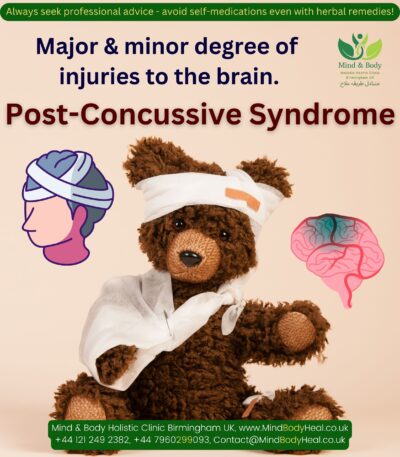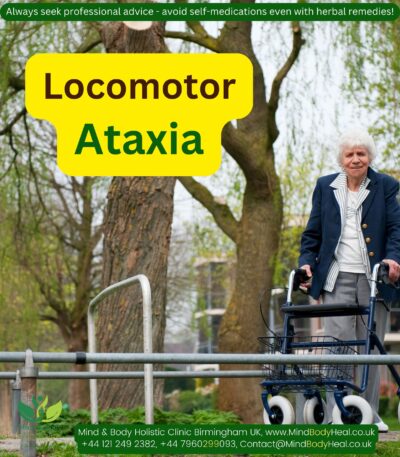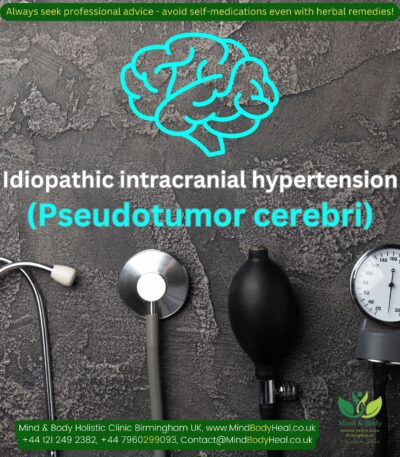Hydrocephalus is an accumulation of fluid in the head.
Hydrocephalus can happen at any age, but it occurs more often among infants and among adults 60 and older.
Hydrocephalus (Psora) is the build-up of fluid in the cavities deep within the brain due to disturbance of the flow or absorption of cerebrospinal fluid (CSF – a fluid that normally surrounds your brain and spinal cord.)
The excess fluid increases the size of the ventricles and puts pressure on the brain.
This fluid flow through ventricles and eventually flows in spaces that surrounds the brain and spinal cord. It provides nutrients to brain and also act as shock absorber in case of any jolts and hit to the head. This fluid undergoes a cycle of constant production and reabsorption. When this fluid exceeds a normal amount then it increases the size of ventricles and puts pressure on the brain and can cause brain damage.
Cerebrospinal fluid plays an important role in brain function by:
- Keeping the brain buoyant, allowing the relatively heavy brain to float within the skull
- Cushioning the brain to prevent injury
- Removing waste products of the brain’s metabolism
- Flowing back and forth between the brain cavity and spinal column to maintain a constant pressure within the brain — compensating for changes in blood pressure in the brain
Hydrocephalus can happen at any age, but it occurs more frequently among infants and adults 60 and over. It can occur before a baby is born (means congenital) or can develop shortly after birth.
Common Causes
When there is an imbalance between amount of CSF produced and amount of CSF absorbed into the bloodstream.
Too much cerebrospinal fluid in the ventricles occurs for one of the following reasons:
- The most common problem is a partial blockage of the flow of cerebrospinal fluid, either from one ventricle to another or from the ventricles to other spaces around the brain.
- Poor absorption. Less common is a problem with absorbing cerebrospinal fluid. This is often related to inflammation of brain tissues from disease or injury.
- Rarely, cerebrospinal fluid is created more quickly than it can be absorbed.
- Congenital (from birth)
- Aqueduct stenosis, forking or atresia
- Hind-brain abnormalities, spina bifida
- Vein of Galen aneurysm
- Space-occupying lesion
- Acquired aqueduct stenosis
- Colloid and arachnoid cysts
- Thalamic glioma
- Intraventricular tumors
- Posterior fossa tumors
- Tentorial herniation
- Ventricular hemorrhage
- Prematurity
- A-V malformation
- Defects of flow in subarachnoid space
- Infections
- Pyogenic
- Tubercular or fungal
- Subarachnoid hemorrhage
- Trauma
- Meningitis carcinomatosis
- Foreign matter
- Defects of absorption of CSF at the arachnoid granulations
- Congenital deficiency of arachnoid granulations
- Birth trauma
- Skull deformities
GENERAL SYMPTOMS
- Head enlargement at birth, after 2-3 months of birth or even later
- Face remains small in proportion to the enlargement of head
- Divergent squint and paralysis of upward gaze -The person cannot raise his upper eyelid (setting- sun sign)
- Wasting (losing flesh)
- Weakness
- Blindness
- Separation of the sutures and widening and fullness of the anterior fontanelle
- Epileptic manifestations (fits)
- Spasticity (resistance to passive movement of a limb that is maximal at the beginning of movement and gives way as more pressure is applied)
In infants: New-borns
Hydrocephalus present at birth (congenital) or shortly after birth can occur because of any of the following:
- Abnormal development of the central nervous system that can obstruct the flow of cerebrospinal fluid
- Bleeding within the ventricles, a possible complication of premature birth
- Infection in the uterus — such as rubella or syphilis — during pregnancy, which can cause inflammation in fetal brain tissues
A birth defect called neural tube defect in which the spinal column doesn’t close properly and an opening remain in it.
Certain Infections (like rubella and syphilis) in the uterus during pregnancy
bleeding in the brain ventricles during delivery or soon after it.
The reasons in infants (babies less than one year) and among all other age groups include central nervous infections like meningitis, trauma / injury to the brain, bleeding in the brain, tumours of the brain or spinal cord.
Various types:
Acquired Hydrocephalus that develops at birth or in adulthood and is typically caused by injury or disease.
Congenital Hydrocephalus: It is present at birth and may be caused by events that occur during fetal development or as a result of genetic abnormalities.
Communicating Hydrocephalus occurs when there is no obstruction to the flow of CSF within the ventricular system. The condition arises either due to inadequate absorption or due to an abnormal increase in the quantity of CSF produced.
- Inflammatory diseases of the central nervous system (CNS) → inflamed arachnoid villi which decrease absorption of CSF.
- Choroid plexus papilloma or carcinoma ( result in excessive production)
- Inflammation of the choroid plexus
Non-communication (Obstructive): It occurs when the flow of CSF is blocked along one of more of the passages connecting the ventricles, causing enlargement of the pathways upstream of the block and leading to an increase in pressure within the skull.
- Headache
- Nausea
- Vomiting
- Abnormal gaits
- Impaired consciousness
- Decrease pulse rate
- Enlarge head
- Irritability
- Poor feeding
- Seizures
- Eyes fixed downward (sunsetting of the eyes)
- Deficits in muscle tone and strength
- Poor responsiveness to touch
- Poor growth
- Abnormal movement of extremities
Normal Pressure Hydrocephalus: A form of communicating hydrocephalus that can occur at any age, but is most common in the elderly. It is characterized by dilated ventricles with normal pressure within the spinal column.
- Urine urging
- Urine incontinence.
- Memory loss
- Abnormal gait.
Hydrocephalus Ex-vacuo: It primarily affects adults and occurs when a degenerative disease, like Alzheimer’s disease, stroke or trauma, causes damage to the brain that may cause the brain tissue to shrink.
- Occurs in primary cerebral atrophy or cerebral destructive lesions
- Actually a misnomer; not a true hydrocephalus
Common Symptoms
Infants (child less than 1 year of age)
Rapid increase in head size, bulging of fontanel (soft spot in the skull) on the top of head. The head may appear unusually large with this and the eyes are fixed downward (sometimes called sunsetting of eyes). With this the babies may be highly irritable, fussy, cranky and have poor appetite. Other symptoms that they may show are excessive sleepiness, vomiting, seizures / fits, decreased muscle tone and strength. Babies born with this condition (congenital hydrocephalus) can have permanent brain damage causing long-term complications like learning disabilities, vision problems, speech problems, memory problems, epilepsy and problems with physical coordination.
- Changes in the head
- An unusually large head
- A rapid increase in the size of the head
- A bulging or tense soft spot (fontanel) on the top of the head
- Physical signs and symptoms
- Nausea and vomiting
- Sleepiness or sluggishness (lethargy)
- Irritability
- Poor eating
- Seizures
- Eyes fixed downward (sunsetting of the eyes)
- Problems with muscle tone and strength
- A high-pitched cry
- Problems with sucking or feeding
- Unexplained, recurrent vomiting
Toddlers and Older Children
An unusually large head, eyes that are fixed downward, changes in facial appearance, headache, blurred / double vision, squint of eyes. They may have high pitched cries, excessive sleepiness, low energy levels, irritability, seizures, lowered appetite, nausea or vomiting, muscle spasms. They may have poor coordination and have problems with walking, speech or other acquired skills till date, or may have loss of bladder control (urinary incontinence). A child may have delayed growth, have personality changes, difficulty concentrating, reduced performance in school.
- Physical signs and symptoms
- Headache
- Blurred or double vision
- Abnormal eye movements
- Abnormal enlargement of a toddler’s head
- Sleepiness or sluggishness
- Nausea or vomiting
- Unstable balance
- Poor coordination
- Poor appetite
- Loss of bladder control or frequent urination
- Behavioral and cognitive changes
- Irritability
- Change in personality
- Decline in school performance
- Delays or problems with previously acquired skills, such as walking or talking
Young and Middle-aged Adults
Tiredness, problem with walking, difficulty in concentration and a drop in memory that affect performance at job, bladder problems (including frequent urination or loss of bladder control.)
- Chronic Headache
- Sluggishness
- Loss of coordination or balance
- Loss of bladder control or a frequent urge to urinate
- Vision problems
- Decline in memory, concentration and other thinking skills that may affect job performance
- Older adults
Older Adults (aged 60 years or above)
Frequent urination or loss of bladder control, memory loss, problems with reasoning skills, poor coordination, balance issues, and problems with walking.
- Loss of bladder control or a frequent urge to urinate
- Memory loss
- Progressive loss of other thinking or reasoning skills
- Difficulty walking, often described as a shuffling gait or the feeling of the feet being stuck
- Poor coordination or balance
- When to see a doctor
- Seek emergency medical care for infants and toddlers with these signs and symptoms:
Other factors that can contribute among any age group include:
- Lesions or tumors of the brain or spinal cord
- Central nervous system infections, such as bacterial meningitis or mumps
- Bleeding in the brain from a stroke or head injury
- Other traumatic injury to the brain
Further Complications
In most cases, hydrocephalus progresses, which means complications, including intellectual, developmental and physical disabilities, can occur if it’s not treated. It can also be life-threatening.
FREE Shipping included – Usually dispatched within 1 – 2 working days!
Are you concerned about your health or managing a recurring or chronic condition?
Our website provides informed guidance and initial supportive care for individuals who are finding it difficult to access their doctors or who have not experienced desired improvement with conventional options.
We help individuals explore a range of natural and holistic healing approaches to encourage balance and long-term wellness that may complement your healing journey.
We offer a ready-to-use complementary remedies kit designed to ease discomfort and support well-being, with clear instructions for each item.
The kit includes a personalised selection of remedies based on your signs, symptoms, and likely causative factors.
It may combine homeopathic medicines, herbal or daily supplements, a tailored diet plan, lifestyle guidance, practical tips, and topical applications where needed. It’s suitable if you value the healing potential of natural, holistic remedies.
Complementary remedies work best alongside standard medical treatments and can usually be taken safely with your regular medications.
Our homeopathic remedies follow Dr. Hahnemann’s traditional dilution and succussion methods and are prepared by a qualified naturopathic practitioner, supported by research, clinical experience, and observed outcomes in similar cases. Treatment duration can range from a few weeks to several months, depending on severity and chronicity. Outcomes vary with individual factors and case complexity.
If you prefer lactose pills instead of sucrose globules, let us know. Please also provide the patient’s age so we can supply appropriately sized pills. You can simply send this via WhatsApp at 07960 299 093.
These remedies may contain trace amounts of natural plant, mineral, or animal substances, preserved in medical-grade alcohol. Inform us of any allergies or dietary restrictions before purchase.
You may contact us before starting or book a detailed consultation (in person or via teleconsultation) with one of our experienced naturopath for your detailed assessment or personalized guidance.
Natural remedies can affect the body and may not suit everyone. At the start of treatment, some patients—especially with mental health or skin issues—may experience a temporary increase in symptoms. This may represent medicinal aggravation, indicating the body is responding, though symptoms may not be connected and simply coincidental. If they persist, contact us for support.
Why some patients choose natural, complementary or holistic remedies:
• Symptomatic relief and improved well-being
• Gentle options with fewer side effects
• Whole-person focus, addressing physical, emotional, and lifestyle factors
• Root-cause and preventive emphasis
• Encouragement of active self-care
• Support alongside conventional treatment
• Personalised and accessible care
Precautions:
• Inform your healthcare provider about any complementary therapies
• Some herbs or supplements may interact with conventional medications
• Do not replace conventional treatment for serious, chronic, or terminal conditions
These complementary remedy kits are provided for your own discretion and personal responsibility. Use them mindfully and avoid self-medicating in sensitive situations.
If you are looking for a specific remedy / kit not listed on our site or a customized formulation, contact us—our range is extensive and can be tailored to your physical and mental symptoms and causative factors.
Disclaimer:
Natural remedies—including homeopathic remedies, herbal supplements, and aromatherapy products—are generally safe for most people, including children and older adults. Still, consult your GP or healthcare provider before use, especially if pregnant, breastfeeding, or managing chronic or serious conditions.
- Our remedies support general wellness and are not a substitute for medical advice.
- Review product details and make informed decisions before purchasing, particularly for ongoing or serious concerns.
- We provide general guidance only; detailed personalised consultations are not available through this platform.
- These remedies are intended for individuals able to follow instructions independently.
- Our support focuses on product use and general information; repeated or highly detailed personal queries may not receive individual responses.
- If you need frequent reassurance or highly tailored advice, please consult a qualified naturopath or healthcare provider before purchasing.
Due to strict UK regulations on the sale of medicinal products, we cannot give specific advice, without a face-to-face consultation.











































































